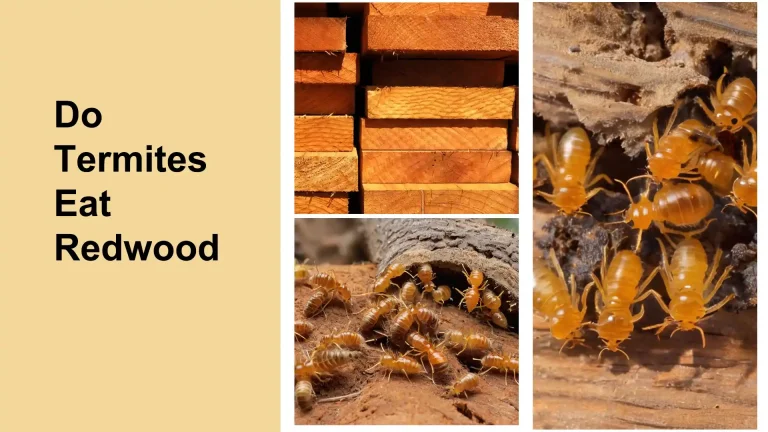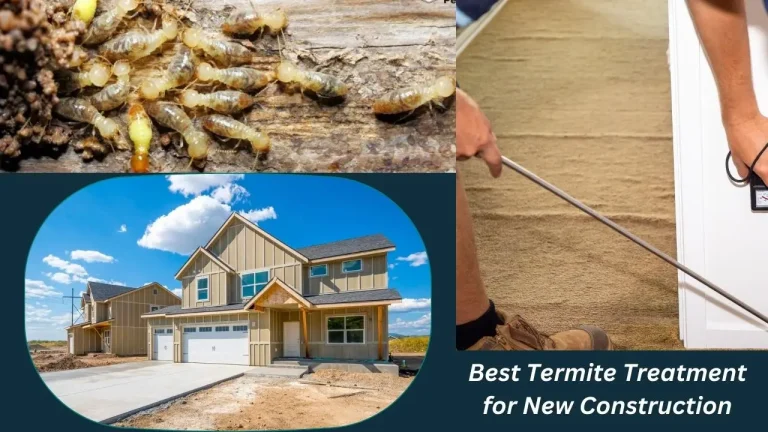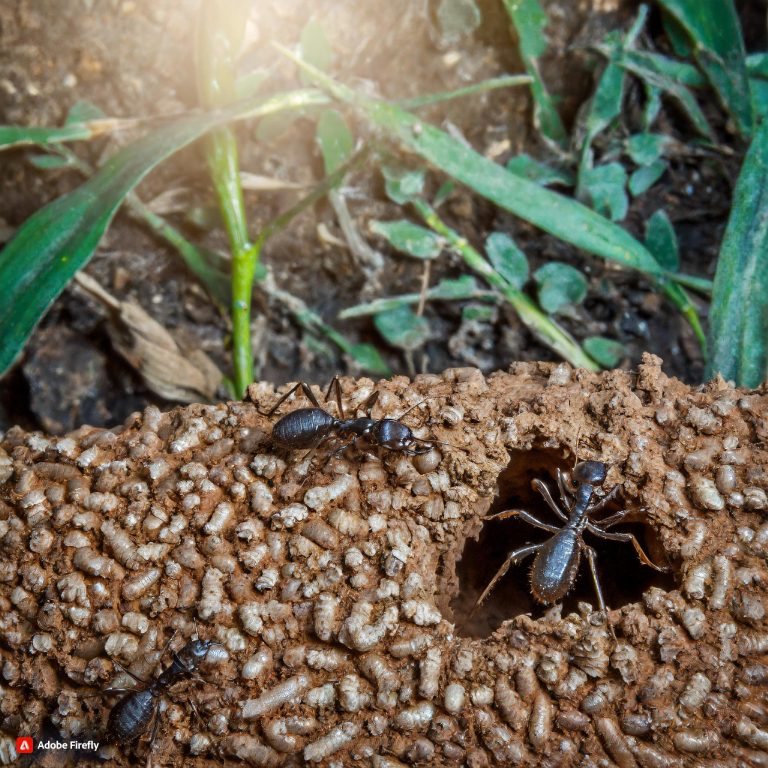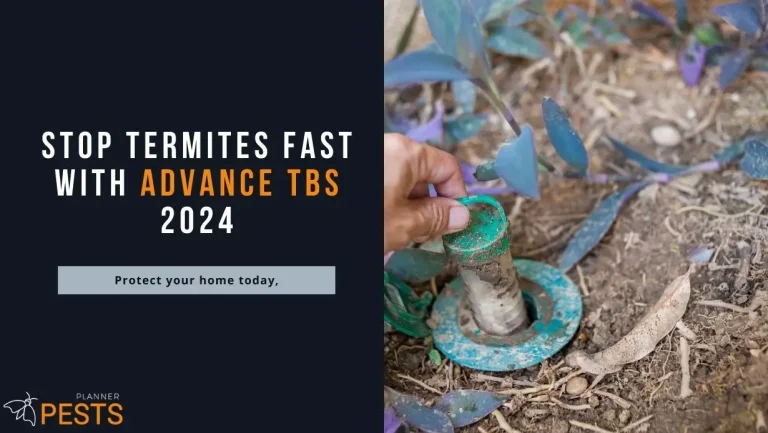How To Treat Termites in Door Frame

- What Does Termite Damage In A Door Frame Look Like?
- How do termites get into your door frames
- Effective Ways to Get Rid of Termites in Your Door Frame
- Repair Termite Damage on Door Frames
- Can Damaged Door Frame Be Repaired?
- FAQs on Termites in Door Frames
- Key Takeaways: How To Get Rid of Termites in Door Frames
Finding termites in door frame can be alarming. As soon as you spot signs of termite activity, it is crucial to take action before the infestation spreads and causes serious damage to your home’s structure and belongings. This comprehensive guide will outline various effective methods to get rid of termites in your door frame and prevent future invasions.
What Does Termite Damage In A Door Frame Look Like?
Termites attack cellulose material to use as a food source. Since door frames are usually made of wood, they become easy targets. Tell-tale signs of termites in door frame include:
- Small piles of termite droppings known as frass near the frame
- Hollowed out areas or tunnels in the wood, which may allow moisture seepage and water damage over time
- Sagging, cracking or buckling in parts of the frame
- Tiny holes in the frame, through which termites enter
- A section of the frame that sounds hollow when tapped
- Swarmers around the frame, especially during spring
- Blistered paint or stained areas on the frame
If you spot any of these signs, it means subterranean termites have infested the door frame and are nesting inside, attacking the wood. Their extensive tunneling causes severe structural damage that requires prompt action.
How do termites get into your door frames
There are a few ways pesky termites can gain entry into door frames:
- Through cracks: If there are any cracks, crevices or gaps in the frame or between the frame and the wall, termites can squeeze through these openings.
- Via the soil: Subterranean termites live underground and build mud tunnels to reach your home. If the soil comes in contact with any part of the door frame, they can build tunnels to reach and infest the wood.
- Through other infested areas: If you have an existing termite colony elsewhere in your home, workers can spread to the door frames and walls via mud tunnels.
- Swarmers: In spring, termite reproductives emerge and fly around seeking new nesting spots. They can enter through tiny cracks and start a whole new colony.
This highlights the need to seal all possible entry points and ensure no part of the door frame touches the ground outside.
Effective Ways to Get Rid of Termites in Your Door Frame
If you have detected termites in or around the door frame, taking prompt action is necessary to get rid of the infestation, repair damages and prevent recurrence. Here are some fail-safe methods:
DIY Methods
Place A Door Sweep At The Bottom Of The Door
Door sweeps or door shoes made of brush, vinyl, felt or rubber can be easily installed at the base of doors. This helps block termite entry through the gap between the door’s bottom edge and the floor. Ensure the sweeps have a tight seal all around without any openings for the pesky pests to squeeze through. properly installed door sweeps create a physical barrier to control termite.
Use Weather-stripping
Weather-stripping on doors and windows blocks air leaks and also acts as a barrier against termite intrusion. Apply weather-stripping on the door jambs to seal all sides, especially exterior doors which have higher chances of infestation. Ensure there are no gaps larger than 1/64 inches in the weather-stripping or its sealant may allow termites to chew through.
Keep The Mulch Away
Remove any wood or bark mulch that touches the exterior walls or door frame. Termites use such mulch to construct shelter tubes and gain access into the door frame. Ensure there is a gap of at least 12 inches between the mulch beds and your home’s exterior. Replace mulch around doors with pea gravel or stone.
Install A Screen At The Door
Installing a screen door provides an added protective barrier to prevent swarmers and alates from flying in through the gaps around the main door. Ensure the screen mesh is fine enough to block termite entry. A 16 mesh screen can help obstruct termite intrusion points.
Use Boric Acid
Lightly dust boric acid powder onto affected areas of the door frame. Termites ingest it as they groom themselves, and the powder’s slow toxic effects help eliminate colonies over time. Exercise safety precautions when applying.
Repair Termite Damage on Door Frames
If termites have already caused damage to the wood in your door frame, prompt repair is needed. Here is how to fix termite-damaged door frames:
How Do You Repair Wood After Termite Damage?
- Inspect the full extent of the damage – are holes going all the way through the frame or is it surface damage only?
- Use a screwdriver to poke at damaged areas to determine how deep the infestation is. Knocking on the wood can also give an idea of hollow tunnels within.
- Sand down surface damage and use wood fillers or epoxy to fill tunnels, cracks and holes.
- For frames with extensive termite damage, saw off and replace parts of the frame or install complete new door jambs.
- Treat sanded and repaired areas with borate powder before painting to prevent recurrence.
- Finally give two to three coats of protective paint.
Can Damaged Door Frame Be Repaired?
If over 30% of the wood in the frame is damaged due to extensive tunneling, it may be too weak to repair. For such severe termite infestation cases, replacing the full door along with the frames gives better and longer-lasting results.
Seeking help from professional exterminators can also be prudent as they have commercial grade tools and wood treatment solutions to manage large-scale damage better.
Professional Pest Control
For more serious termite infestations inside door frames and walls or for large-scale elimination from the entire home, specialized pest control is needed.
Advantages of Professional Termite Control
- Right tools & solutions: Exterminators use commercial grade termite treatment solutions, foams and drilling tools for better elimination.
- Pinpoint nests: They can identify hidden colonies and tunnel networks and target treatments accordingly for full control.
- Prevent recurrence: Combination treatments like termiticides, baits and soil treatment provide long term prevention from recurrence.
- Damage assessment: They can provide repair cost estimates based on the extent of tunneling damage caused.
Termite Treatment Methods Used By Pest Control Companies
- Liquid termiticides: High potency liquids like Termidor are injected into affected areas. Kills termites on contact and offers long-term prevention too.
- Termite baits: Contain termite-killing ingredients within cellulose bait material. Workers carry baits to the nests and eliminate whole colonies.
- Borates: Disodium octaborate tetrahydrate (or borax powder) fills tunnels, repels and kills termites over time as it is absorbed by their bodies.
- Fumigation: Seals off infested areas and fills with gaseous pesticides to penetrate wood and exterminate whole colonies.
A combination of two or more such professional methods often yields the best termite elimination and prevention results.
FAQs on Termites in Door Frames
What are the signs that termites are attacking your door frame?
- Presence of termite droppings close to the frame
- Visible mud tunnels touching the frame
- Holes or hollowed sections of the wood
- Sagging or distorted frame
- Tap on the wood sounds dull and hollow
- Swarming or flying termites emerging from crevices
Can you get rid of termites yourself?
Trying DIY treatments for minor infestations is possible through methods like using borate powder, borax, orange oil or neem oil solutions along with thorough cleaning of door frames to destroy termite colonies and nesting spots. However, severe cases often require professional pest control for thorough elimination.
Does homeowners insurance cover termite damage?
Most standard homeowners insurance policies do not cover termite damage or the costs for treatment and repairs. One needs to opt and pay additionally for pest damage coverage riders for compensation against termite destruction costs.
What is the average cost to treat termites?
On average, professional termite treatment can cost $1,200 to $1,500+ for most homes. Large homes may cost $2,000 or more. Factors like treatment method, house size, location of colonies and extent of infestation impact costs.
Can vinegar kill termites in wood?
Yes, vinegar releases acetic acid which destroys termite exoskeletons and kills them eventually. Use a 50% white vinegar solution, spray directly onto affected wood, leave for an hour and wipe away. This method works on surface termites only and vinegar cannot penetrate deeper into tunnels.
How do you keep termites out of a wood door frame?
- Install door sweeps
- Use silicone caulk to seal gaps
- Apply weather stripping around the frame
- Keep soil and mulch away from the bottom of the frame
- Fix any cracks in foundation near the door
- Use terminator mesh underneath the frame
- Apply borate powder or neem oil solution periodically
- Get regular professional termite treatments
Key Takeaways: How To Get Rid of Termites in Door Frames
- Check for signs like hollow wood, holes, dust piles to detect termites
- Seal all cracks, install door sweeps to prevent entry
- DIY fixes include boric powder, orange oil, vinegar for mild cases
- Seek professional termite control for nest elimination within walls
- Repair tunneling damage with fillers before further destruction occurs
- Prevent recurrence through soil treatment, baits and scheduled checks
Spotting those pesky little insects crawling on or hollowing out the door frame can be creepy. But acting fast through prompt treatments as outlined above can help protect your home from severe destruction. With diligent inspection and a combination DIY and professional measures, getting rid of termites in door frames is very much possible before major damages hit. Stay vigilant and keep termites away from your doors permanently through consistent checks and upkeep.






